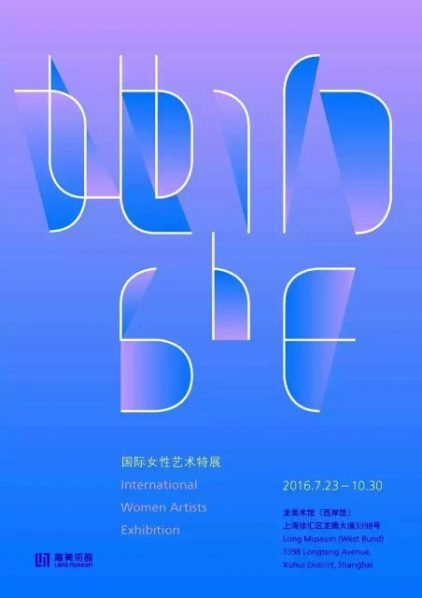
By Wang Wei
She is the very first exhibition in China that features women artists from such a vast region and long history, with the artworks from 13 countries spanning over 10 centuries by 105 artists. She is divided into four chapters: self-annihilation, self-liberation, self-introspection and self-expression, as the exhibition narrates the rise of women from a macro perspective.I hope She can attract more attention to the achievements of women in art, and to women’s emotional world. Women often bear more pressure than men, as the former has to deal with both family responsibilities and social challenges. The world will be a better place if women can receive education and respect. Thus, how much a society concerns about women's living and mental conditions symbolizes the level of civilization. I believe that in the contemporary society, humanity has come to the center of the stage. I consider this exhibition as a reminder to the visitor — learn what "she" has achieved, care about what "she" is pursuing, and support what "she" is longing for.
The Annihilation of Self
There were not many women artists in the early periods, and those whose art survived till today are rare as morning stars. Their talents were anonymous just like their lives, gone with the current of history in a male-dominated art system. During this period, the subject matters of women artists’ works were limited, and the forms of art depended on their family traditions.
The Liberation of Self
In the early 20th century, under the influence of Western culture, some women were liberated from oppression and discrimination. As the new generation of women, they advanced from household to the society, and actively participated in political and cultural events. The team of women artists soon expanded. Some even taught at higher educational institutions. Their pursuits of freedom and art left a mark in art history.
The establishment of the People’s Republic of China in 1949 announced the total liberation of women. Consequently, the slogan of "Women Can Hold Up Half the Sky" came to the mainstream. They used art as a tool of political propaganda, and devoted themselves to the vigorous socialist revolution and construction.
The Introspection of Self
After the awakening of self-consciousness, women artists began to explore their own mode of expression from personal experience. Life, nature, or even trifling details of everyday life became the primary subject matters of their art. They obscured the boundary between subject and object, went across the divisions between ethnic groups or nations, traveled through time and space, and finally met here.
The Expression of Self
From the 18th century to today, together with the development of post-structuralism, the unified subject consciousness and grand narrative of feminism were deconstructed. In stead, feminism surpasses the binary opposition of biological gender and social gender. It turns to women’s specific life experiences to explore the gender difference as well as commonality. "There is no abstract, universal type of woman in the world", the same for women artists. Their pluralistic expressions are originated from the distinctive subjective experience. But such diversity does not equal to individualism. Open discussions of "self" will deepen our understanding of it, and the expressions of "self" will eventually connect everyone.
About the exhibition
- Dates: Jul 23, 2016 — Oct 30, 2016
- Opening: Jul 22, 2016
- Organizer: Long Museum
- Venue: Long Museum West Bund Gallery 1
- Long Museum (West Bund) Corridor Gallery
- Curator: Wang Wei
- Courtesy of the artists and Long Museum, for further information please visit http://thelongmuseum.org.




























